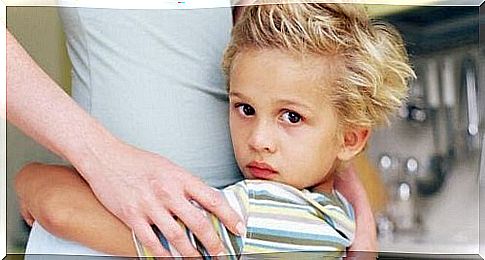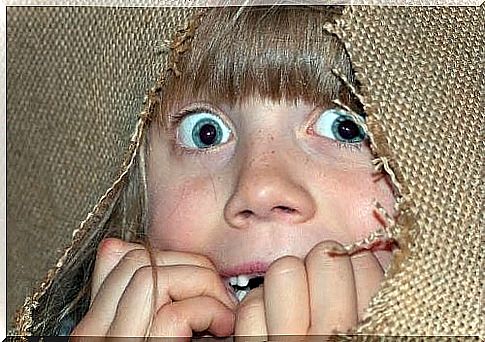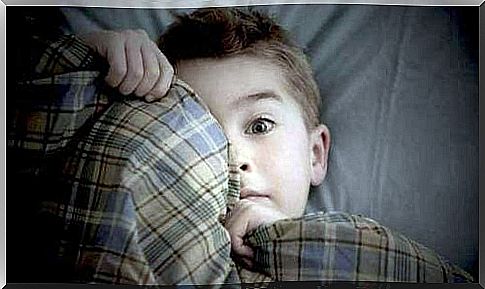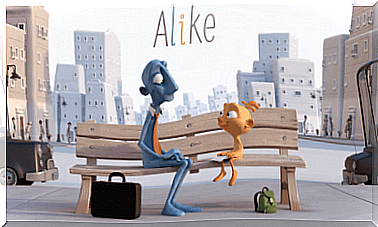Fear In 6-year-old Children

When a child interacts with the outside world, and when new knowledge is gained through stories, television or video games, he experiences new sensations.
Before the age of 5, children spend most of their time at home with their parents. When children turn 6, they become more exposed to the real world and new experiences. They start by interacting with friends at school, playing in the neighborhood and changing their tastes.
They may like to watch scary TV shows or kill villains in computer games. But, they do not want to be confronted with fear in real life.
Frequent triggers of fear in 6-year-old children
In the early years, children’s fears are associated with the absence of parents, animals, monsters or physical phenomena (lightning, for example). From the age of 6, the range of options is significantly wider.
Here is a list of some of the typical forms of fear in 6-year-olds:
Animals
As we have mentioned before, the child is now at the stage where he likes to go outside. He might run into a dog, or another animal, that hurts him and gives him a bad experience.
This is the most common cause of fear of animals. However, it can also be a lack of knowledge. For example, a child may be afraid of cats until it meets one and finds out that they are actually friendly.
We can also include insects in this section. Spiders undoubtedly top this list, which also includes cockroaches and worms.
The darkness
At this age, children are encouraged to sleep in their own room. As a result, turning off the light is associated with the emergence of all types of evil beings who take advantage of this loneliness.
It is a completely natural fear that even occurs in adults. Therefore, be patient and, if asked, leave the light on until your child is no longer scared.

Evil people
Many children are afraid of thieves, kidnappers or another type of bad person who may be out on the streets.
Although a stage of vigilance keeps them on guard, it can, in an exaggerated amount, cause distrust of others when the situation does not justify it.
However, it is important that you teach your child that it should never interact with strangers under any circumstances. That way, he will be more confident, and will be able to counteract his fears.
Patterns
There is no child in the world who is not afraid of monsters. At the very least, do the majority. With a fantasy in full development, children invent creatures and situations that are both unthinkable and frightening.
This is normal for them, so you should not be on guard. Just help them stay calm and little by little they will get over it.
Water
Water is a typical fear in 6-year-old children. The main reason is that humans naturally live on land, and not in water.
Therefore, many children who do not know the dangers are unsafe when wading into the sea, or have to use a swimming pool. They may even be afraid of drowning in their own bathtub.
To prevent this, get your child used to water contact from an early age. That way, he will know that you want to keep him safe, and that’s a way to have a lot of fun.

How to help a child who is scared
The main action that parents should take is to be understanding. The child must be listened to, understood and accompanied at all times when he feels scared.
Furthermore, it is helpful to provide an element of power, such as a “magic wand” against monsters or animals, which “protects” him from evil beings.
We should also learn from examples. When required, it is best to show children how to deal with their fears.
What not to do
Among the things we should not do when we want to help 6-year-olds face their fears are:
- Underestimate their fears, and tell them that they “must be brave” or “there is no need to be afraid”.
- Give them concessions when they are scared, as they can use it to their advantage, and abuse their fears.
- Tell horror stories to discourage behavior, such as going out and playing on the playground at night.
- Transmit your own fears. This is very typical. For example, if a child is playing and the parents say; “Get out of there, otherwise the boogie man will come and take you,” instead; “Be careful not to get hurt”.
When a child comes face to face with his fear, it is normal to cry, or avoid the source of the fear, at whatever cost. If there are symptoms you perceive as violent, you should consult with a child psychologist as it can also be a phobia of something specific.
Finally, remember that we are all afraid of something. Therefore, you need to be understanding, and put yourself in their place so that you can help them overcome their fears in the best way.









